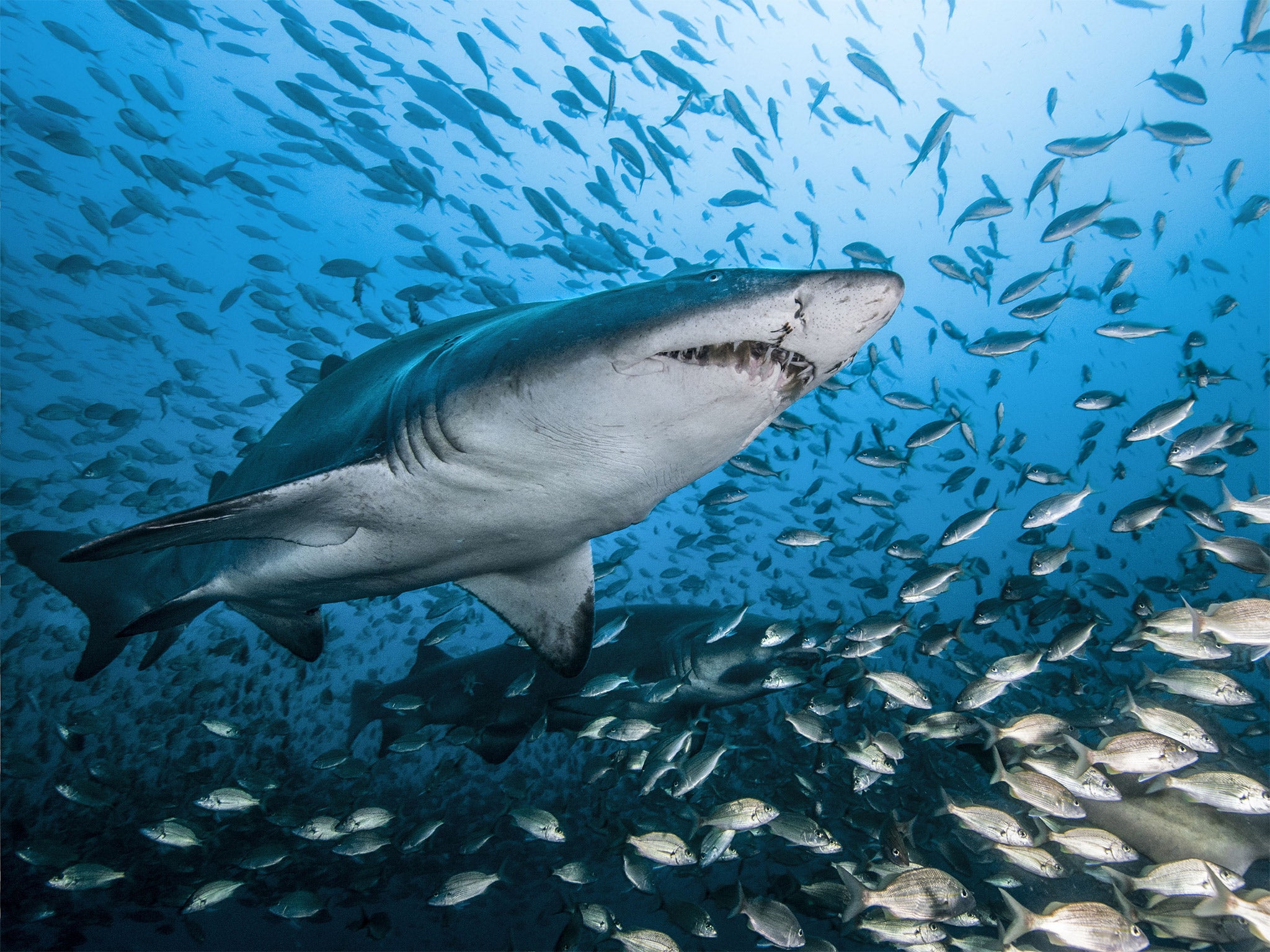Morne Hardenberg: 'Great white sharks have a softer side most people never get to see'
Oliver Duff speaks to a naturalist brave enough to swim with great white sharks

Morne Hardenberg, 38, is one of the few cameramen willing to swim with great whites without a shark cage. By studying them for 16 years he has helped to reveal the polite etiquette of the oceans’ top predators for a new wildlife series by the BBC, Shark.
“You don’t turn your back on a white shark and swim away from it – that’s a trigger. All its food swims away from it.
“When they’re interacting with you, they don’t like you stopping and breaking off the interaction. So we wait for the shark to break off the interaction.
“The animal you meet can be very curious, it finds you very interesting. Sometimes it’s coming into [ital] your [close ital] space. You can’t just bolt. You have to react the same way they would: swim after the shark and show a threat.
“You’re vulnerable on your blindspot. You have to cover your back, whether it’s a cage or a safety diver.
In pictures: 'Shark', BBC's pioneering new wildlife series
Show all 10If you meet a shark that’s woken up on the wrong side of the reef and have to track 20 metres back to the cage, that 20 metres seems far, far away.
“It’s a bit of a dance. You move five metres closer to the cage. If the shark comes back you stop and interact with the shark. The whole team needs to know how to behave because behaving incorrectly puts everyone in jeopardy.
“In the beginning I was very afraid of them. We’ve all seen Jaws, newspaper reports, but they have a softer side that most people don’t get to see.
“More than often we have sharks that are wary of us, staying 15 metres away or down deep. You limit the number of people in the water, breathe as little as possible, make yourself as small as possible.
“We look for big [five-metre-plus] female white sharks that are placid. The smaller sharks can be a little more on edge, they are potentially more dangerous to dive with, more unpredictable. Whereas the bigger ones with lots of experience know they’re at the top, they’re much more relaxed. They’re very forgiving, you can approach them, they can approach you – it’s like a mutual respect. They’re curious about us, to learn about us. Their motivation for being in an area is not always food.
“The 3.5-metre male sharks can sometimes be a handful.
We’re in an open environment and you don’t know which animals you will meet.
“We look for subtle body language changes to know when to break off the interaction. When a shark drops its pecs [pectoral fins] it’s going to start moving fast. That can be because it’s scared rather than aggressive. When the shark’s agitated you see body spasms run along its back. When it gapes, opening and closing its mouth, it’s feeling uneasy. If the back arches, again, that’s agitation.
“The size of the animal makes you feel really very small. You’re concentrating so much when you’re down there diving – on body language, on safety. So you have to play it back again when you’re out of the water. That’s when the emotions come into it. ‘I almost got my fins bitten off!’ White sharks can pick up emotion, they pinpoint one person if they’re uneasy.
“Ninety per cent of people when they think of sharks think of attacks. When I first started shark diving I thought that every shark wanted to eat me. I’m hoping this series breaks down that Discovery Channel ‘Shark Week’ approach of danger, death and adrenaline, and that people will see the interesting side of all these other species that carry the same name.”
Morne Hardenberg was talking to Oliver Duff. He is an underwater cameraman and great white shark naturalist, based at Simons Town, near Cape Town.
Shark starts at 8.55pm on Thursday 7 April on BBC1.
5 big moments in Shark
1. Mobula rays meet
Once a year a quarter of a million rays gather off the coast of Baja, Mexico, for a spectacular courtship display.
2. Great white politeness
Filmed for the first time: great whites greeting and communicating. Also interacting with divers outside a cage.
3. The greatest gathering of sharks and rays Off Mexico’s Yucatán Peninsula, spawning fish attract 800 whale sharks and 300 giant manta rays to an area less than half a mile wide.
No film crew had previously seen it.
4. Shark nursery
Juvenile lemon sharks form friendship groups and learn key skills from one another in the mangroves at South Bimini, the Bahamas. Watch out for the moment where one baby lemon teases the cameraman.
5. Pack hunt
Hundreds of black-tips gather off the coast of South Africa to herd and hunt 10 million anchovies making their migration.
Subscribe to Independent Premium to bookmark this article
Want to bookmark your favourite articles and stories to read or reference later? Start your Independent Premium subscription today.

Join our commenting forum
Join thought-provoking conversations, follow other Independent readers and see their replies